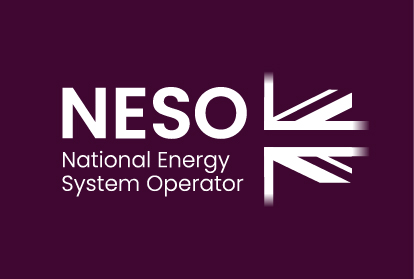Project Summary
Flexible Railway Energy Hubs will demonstrate a transformative approach to accelerate the decarbonisation of the single largest electricity consumer, Network Rail. An Energy Hub is a modular microgrid solution that integrates batteries and local renewable energy with the rail traction network. By transforming the railway into a flexible electricity consumer, the project generates benefits to the electricity network and consumers by reducing wind curtailment expenses via flexibility services and reducing engineering disturbances. The project duration is 5 years and requests £8.3m SIF funding.
Innovation Justification
Challenge theme
Energy Hubs (Hubs) will deliver the first microgrid hub that supports cross sector decarbonisation by facilitating, managing, and integrating transport and flexibility services.
Innovations
Our microgrid approach will be the first scaled demonstration of a battery powered microgrid that couples two large complex networks, rail, and electricity, facilitating cross-sector decarbonisation.
Hubs will use the railway traction power network as a conduit for delivering flexibility and ancillary services to the electricity transmission network. The "reach" of the traction power network gives access to a wide range of low-cost sites for battery storage
and solar panel locations. The traction power network also reaches regions experiencing significant wind curtailment, where Hubs offer significant wind curtailment reduction potential.
Through simulation modelling and predictive control, Hubs will mitigate unwanted interactions of power electronic devices between electricity grid and the railway network as demand grows, while also reducing voltage drops at weak spots around the grid and improving voltage stability.
Counterfactual solutions and approaches
Without Hubs, decarbonising the rail network by 2050 will involve ~450km of track electrification per year, with CAPEX over ~£30n, and will increase the load on electrical networks without introducing any demand flexibility traditional rail electrification
methods have no potential to support the electricity grid or deliver carbon savings. Furthermore, lead times for new major grid connections are currently up to 15 years, implying significant delays in meeting rail decarbonisation targets.
Learning from preceding projects
Hubs stands out as a timely and crucial initiative for cross sector decarbonisation. SP Transmission's leadership in the whole system design and facilitating railway decarbonisation further reinforces the project's importance.
Engagement with stakeholders
Hubs brings together a strong partnership to ensure we can deliver on the ambitions.
We have effectively engaged with: National ESO, National Grid, all ENA TO/DNO members and Network Rail.
Changes in TRL, IRL, CRL
As elaborated in the Innovation appendix, the current Hub technology is at TRL 6, IRL 5, and CRL 5. At the end of the Beta phase, it will be uplifted to TRL 9, IRL 7 and CRL 8.
Rationale for project size and scale
The proposal is proportional and strikes the balance of a demonstration at a suitable scale complemented by effective use of digital modelling. Ayr Depot was selected to host the demonstration, based on electricity grid access, available land ownership rights, minimal risks to railway operations and, demonstrating the greatest range of use-cases. This will also be sufficient to generate engineering practices to support new standards.
The scope of the demonstrator has been developed to utilise existing regulated traction energy. Digital simulations will allow us to model the increase in performance available by removing the following limitations:
- Minimum battery capacity and charge/discharge power possible to demonstrate the principle of traction voltage regulation.
- Limiting the grid services demonstrated to those which only require import of power.
- No installation of solar PV.
We will:
- Generate a blueprint that can be scaled for different sized Hubs.
- Establish industrial standards.
- De-risk the technology rollout.
Impacts and Benefits
Current position and Counterfactual (pre innovation baseline)
The rail network is already the UK's largest electricity consumer (4.21Wh p.a. ~1.2% of total UK demand, emitting 1.2 million tCO2e). At present this single largest electricity consumer is not flexible, without benefits for the electricity system or the rail system.
Diesel trains consume 648 million litres of diesel per annum, emitting an additional 1.8 million CO2e. Replacing diesel trains with electric trains would nearly double rail electricity demand, requiring 448km of track to be electrified every year to meet the net zero target by 2050, representing over £30b investment. The lead time for critical new projects to be connected to the grid is currently >15 years, implying a high risk of delayed railway electrification.
Benefits of the Energy Hubs
The Hubs project is an innovative engineering demonstration which aims to create a blueprint for accelerating decarbonisation of major UK electricity demands. The project also balances commercial and regulatory considerations, with staged outcomes. The project will also verify our forecasts of significant and tangible benefits of up to £2 billion by 2070, including reduced construction costs and investment in conventional grid reinforcement, reduced electricity bills and network outages.
Benefits from Hubs comprise of:
For Electricity Network Operators:
- Reduced Wind Curtailment costs.
- Benefits from Demand Flexibility Service.
- Carbon Emission Reduction.
For Railway Industry as the major demand:
- Avoided Overhead Line Construction CAPEX.
- Savings by Time Shifting Electricity Use.




